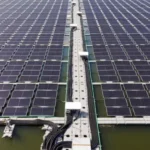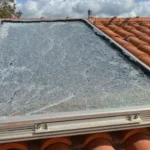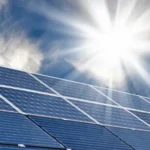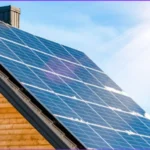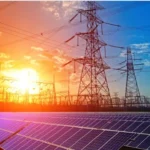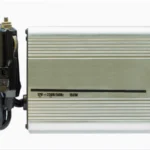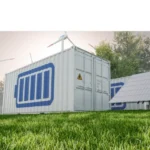Imagine this: You’ve invested thousands into a sleek rooftop solar system, watched your utility bills shrink, and felt the pride of running your home on clean energy. But months later, you start to wonder: why is my system producing less power than expected?
Spoiler alert: It might not be your panels. It could be what’s on them and what’s not protecting them.
In this post, we’re going to break down exactly how homeowners and small business owners use Solar Protector for investment, prevent unnecessary energy losses, and even extend the lifespan of their systems. It all starts with an innovative approach to solar protection.
Whether you’re new to solar or have had panels installed for years, understanding the role of maintenance, system monitoring, and choosing the right protector strategy is key to unlocking your system’s full potential.
Also click this page : PV system.

Why Your Solar Panels Might Be Underperforming
Solar panels are remarkably low-maintenance, but they’re not completely self-sufficient. Environmental factors like dust, pollen, bird droppings, and pollution can block sunlight and reduce your system’s efficiency. In some cases, this leads to energy loss of up to 20 percent.
In one recent project I consulted on in Phoenix, a homeowner was losing over 15 percent of daily output simply because of desert dust accumulation. After a proper cleaning and installing a protective surface treatment (more on that shortly), production rebounded, and they were back to offsetting nearly 90 percent of their household energy needs.
This is where a solar protector strategy comes into play: an integrated plan that includes both physical protection and ongoing maintenance to keep your system running optimally.
The Role of a Solar Protector: What Does It Actually Mean?
Think of a solar protector as your system’s defense team. It’s made up of tools, techniques, and services designed to:
- Shield panels from long-term surface degradation
- Prevent energy loss from soiling
- Ensure safe and effective energy output over time
- Catch and resolve minor issues before they become major ones
Elements of a Smart Solar Protection Strategy
Here’s what a solid solar protection plan should include:
- Surface Treatment Coatings
Hydrophobic and anti-static coatings can repel water and dust, reducing how frequently your panels need cleaning.
- Regular Cleaning Schedule
Industry guidelines (NREL) suggest cleaning panels every 3 to 6 months depending on local conditions.
- Real-Time Monitoring Tools
Systems like Enphase or SolarEdge offer performance tracking down to the panel level. Use this to detect sudden dips that may indicate soiling or component failure.
- Professional Inspections
A licensed solar installer should inspect your system annually, checking inverters, connectors, wiring, and mounting hardware.
Also visit here : service support.
How Dirt and Grime Steal Your Watts (and Money)
The problem isn’t just that dirty panels look bad. It’s that they can quietly cost you real savings.
According to the National Renewable Energy Laboratory (NREL), dirt accumulation—also called “soiling loss” can reduce panel output by 2 to 7 percent in average climates, and up to 20 percent in dry, dusty regions.
Visual Guide: Signs Your Panels May Need Cleaning
- Noticeable film or haziness
- Drop in monthly energy production without a weather cause
- Bird activity in your area
- Windblown debris from nearby construction or fields
Tip from the field: One of my long-time clients in Northern California installed a low-pressure rooftop sprinkler system that lightly rinses their panels every few days. This keeps them clean without climbing a ladder.

Protecting More Than Just Panels: Inverters, Batteries, and EV Chargers
While panel cleanliness is critical, there are other components of your solar setup that deserve protection.
1. Smart Inverter Health
Your inverter is the brain of your system. A common issue I see in older installs is inverter overheating or partial failure that goes unnoticed. Here’s what to look for:
- Error codes on your system app
- Sudden voltage drops
- Odd clicking or buzzing sounds
Quick fix: Make sure your inverter is shaded and free from dust buildup. If it’s near the ground, clean the vents every 3 to 6 months with a dry brush or vacuum.
2. Solar Battery Maintenance
Batteries like the Tesla Powerwall or LG Chem are sensitive to extreme temperatures. Use enclosures or shaded storage to prolong lifespan and maintain efficiency. Avoid full discharges to prevent capacity degradation.
Battery protection tip: Check your battery’s firmware updates via its app. Manufacturers often roll out efficiency improvements or safety patches.
3. Solar EV Charger Selection
If you’re charging your EV from solar, a weather-protected, UL-listed charger is essential. Look for:
- IP65-rated enclosures (for water and dust resistance)
- Surge protection (especially in storm-prone areas)
- Compatibility with your battery system (if applicable)
Investing in a solar protector setup for your EV charger ensures you’re not putting added stress on your system or risking outages.
Going Off-Grid? Protection Matters Even More
In off-grid setups, your system is your lifeline. A power drop isn’t just inconvenient—it’s critical.
Must-Haves for Off-Grid Solar Protection
- Redundant battery systems
- Smart charge controllers with auto-shutoff
- Voltage surge protectors on all major components
- Roof anchors and hurricane ties in storm zones
In one off-grid cabin install I worked on in the Colorado Rockies, we integrated a heated enclosure for the battery bank and a tilt system to keep snow sliding off panels. Those small protection decisions added years of life to the system.

Solar Panel Cleaning: DIY vs Professional
If your panels are easy to access (like on a single-story roof or ground mount), DIY cleaning can be a safe, cost-saving option.
Step-by-Step DIY Solar Panel Cleaning
- Turn off the system (consult your installer or user manual)
- Use a soft hose—never a pressure washer
- Gently scrub with a soft sponge or window cleaning brush
- Rinse thoroughly and let air dry
Avoid using harsh detergents, abrasive scrubbers, or tools with metal edges.
For steep roofs or stubborn buildup (like bird droppings or sap), it’s safer to hire a professional cleaning service mainly if they include inspections as part of the package.
When to Call a Pro: Solar Protector Services
Here’s when it’s worth bringing in the pros:
- You notice a consistent drop in output despite clear weather
- You haven’t had an annual system inspection
- There are signs of corrosion or wire damage
- You suspect your inverter is malfunctioning
- Your solar monitoring app is showing panel-level underperformance
Many installers now offer subscription-based solar protector plans that bundle annual cleaning, inverter checks, and performance audits. If you want a true set-it-and-forget-it solution, this can be a great option.
Don’t Just Install. Protect Your Power
Solar is a long-term investment. It rewards you every day with lower bills, cleaner energy, and energy independence. But to truly reap those benefits, you need to treat your system like the asset it is.
From adding a hydrophobic coating to monitoring your inverter’s output, a solid protector strategy pays for itself many times over.
Final Thoughts and Take Action
If your panels haven’t been cleaned in over 3 months, you could be losing 10 to 20 percent of your energy output and might not even know it. A little protection now prevents a big problem later.
Ready to protect your solar investment? Schedule a system checkup, review your monitoring data, or ask your installer about a comprehensive solar protector plan today.
Your panels are already working hard. Make sure they’re working smart.


